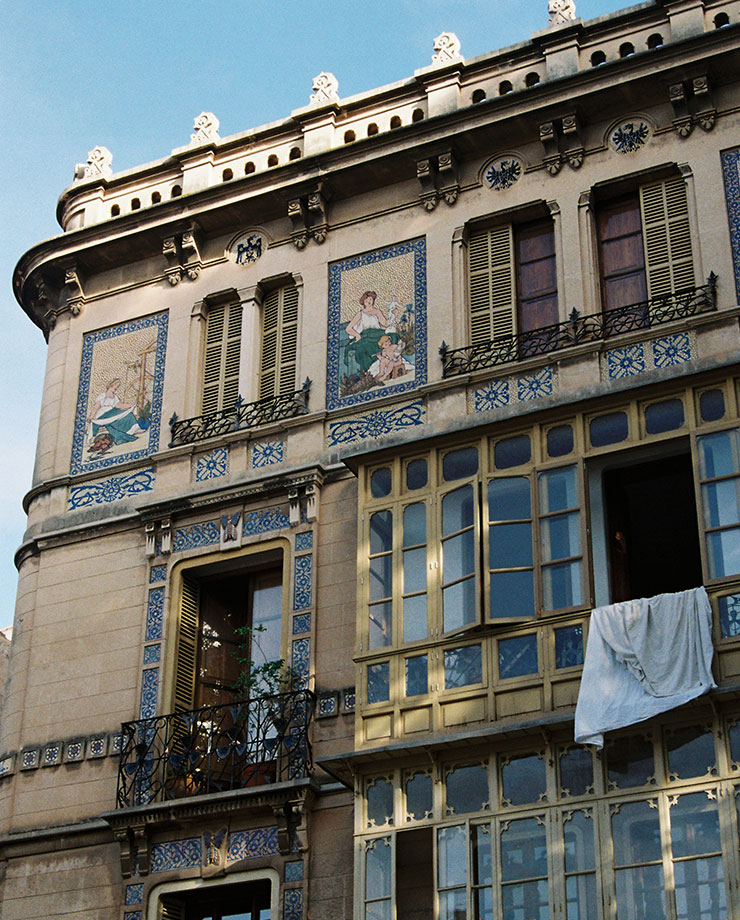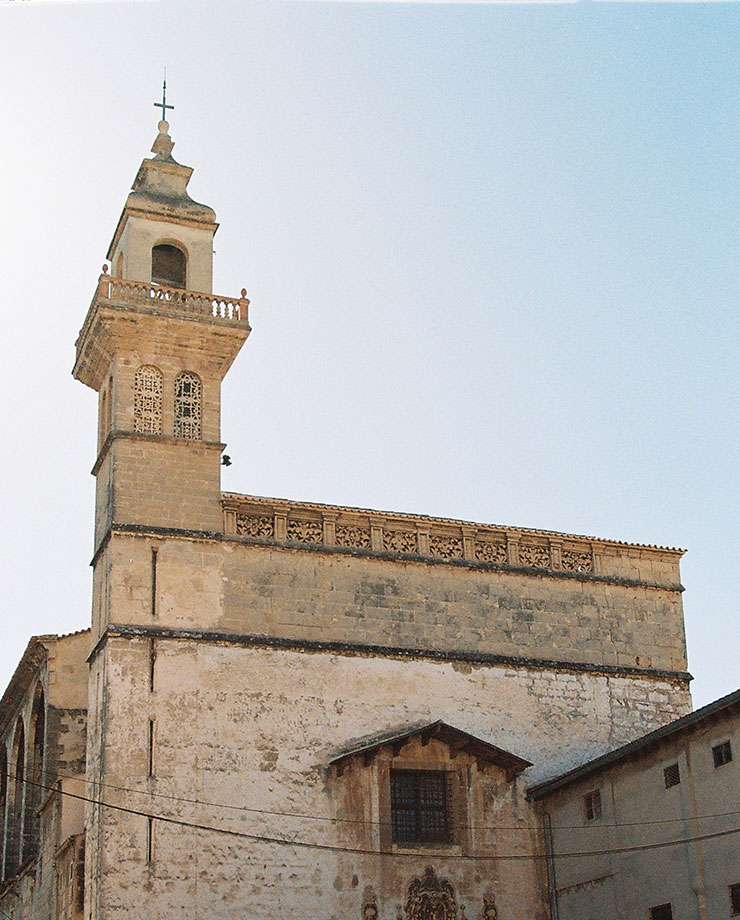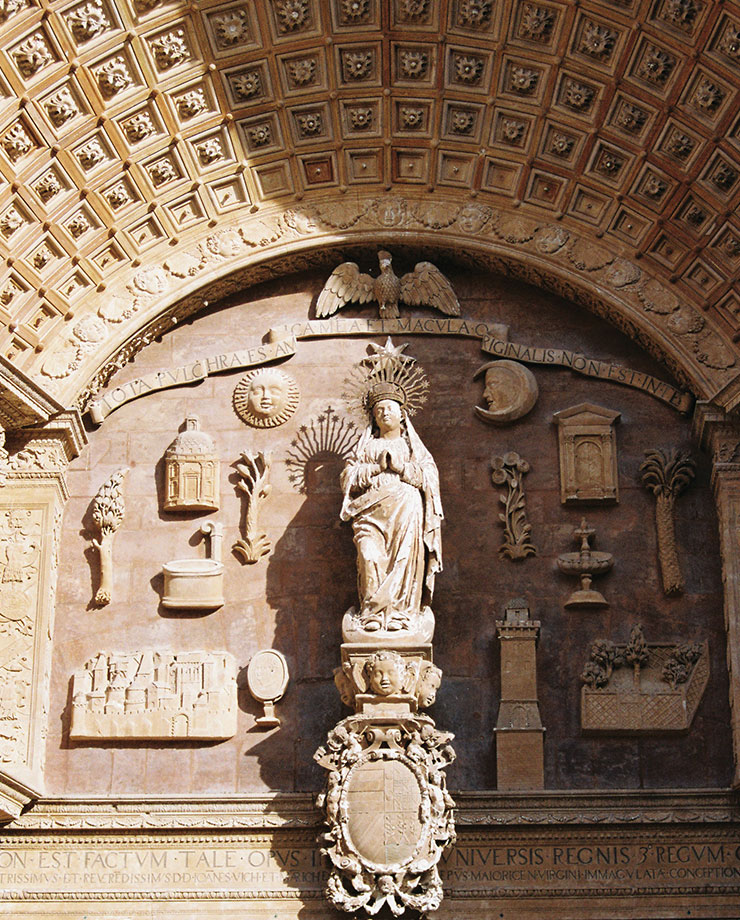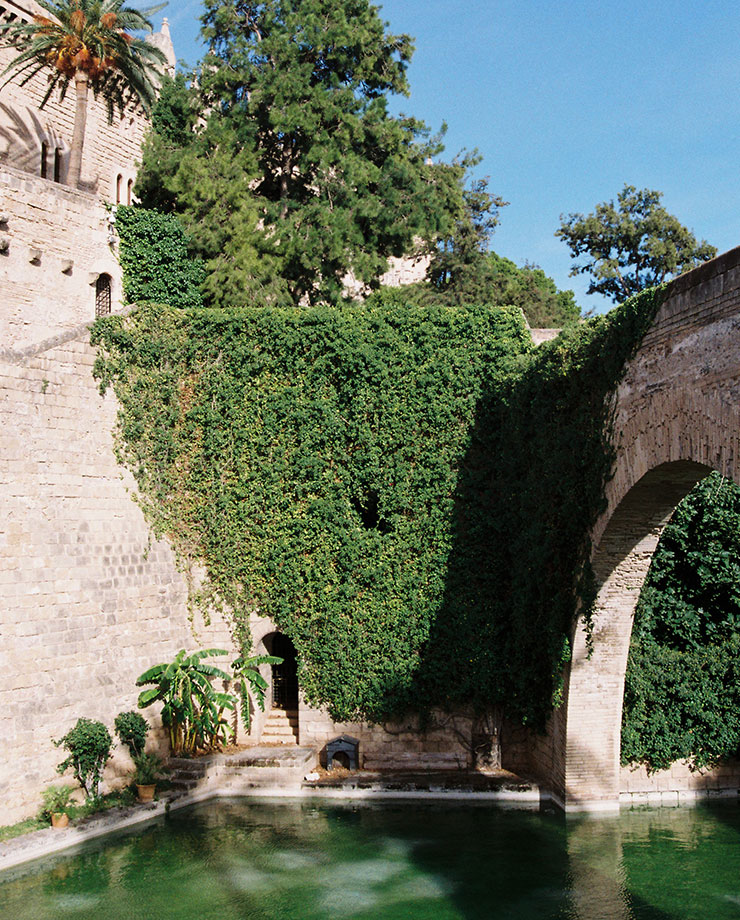Welcome to Palma
Nestled in the southern crescent of Mallorca, Palma is the perfect home-base for those just arriving to Mallorca. Distinct from the island’s many sleepy villages, Palma is an active city that offers a little something for everyone: architecture, history, cuisine, art, beach-going, and vibrant nightlife included.
We’ve narrowed down our favorite hidden spots in Palma’s historic center to seven beautiful places. Come down narrow alleys, past hidden palaces, and ancient ruins to arrive at Palma’s most impressive landmark, La Seu Cathedral.




Ca’n Joan de s’Aigo
A great snack break opportunity, Ca’n Joan de s’Aigo is a historic cafe that was founded in 1700. Popular among locals, you’ll find hot chocolate, ensaimadas, and homemade ice cream among many other sweet and savory treats on their menu. Be warned, it can get quite busy, but the service is usually very speedy! Show on map .


Plaça de Quadrado
This tranquil square connects to some of the oldest streets in Palma where you can view grand interior patios through iron gates. Impossible to miss, Can Barceló is a modernist building decorated with beautiful mosaic tiles depicting tender moments between mothers and their children. This building is recognized for changing the appearance of Palma’s historical center at the time of its construction in 1902. Show on map.

Can Vivot
Can Vivot is an impressive historic palace in the center of Palma’s old town. When you pass by its gates, you’ll understand why. The magnificent entryway is an instant portal to the 14th century when it was originally built. We recommend organizing a tour ahead of time: https://canvivot.es. Show on map.


Convent de Santa Clara
One of the best examples of Gothic architecture in Palma, the Convent of Santa Clara was founded in 1256 and is still home to a private community of nuns. At the side of the church courtyard you’ll find a room with a window called a ‘torno’ where you can ring the bell for a nun to sell you artisan baked goods and ice cream. The design of the turnstile allows you to take your treat and pay without ever seeing the nun on the other side – a centuries old tradition. Show on map.


Banys Àrabs (Arab Baths)
Dating back to the period between the 10th and 12th century, these ancient baths are some of the very few remains of the Arab city of Medina Mayurqa. Surrounding the ruins is a tranquil garden where bathers would have cooled off after washing. Feel free to take a rest here and enjoy your surroundings. The Banys Àrabs are open from Monday to Friday from 10.00 to 18.00. Tickets cost 3 euros to enter. Show on map.

La Seu
Last but not least, we have La Seu. Also known as the Catedral-Basílica de Santa María de Mallorca, La Seu is one of Europe’s tallest Gothic structures. Built on the site of a former mosque in 1229, it would take another 400 years to finally complete. A fun fact about this cathedral is that Antoni Gaudi designed some of the magnificent interior, including the extravagant main canopy. Show on map


Our Tips
We recommend wearing comfortable walking shoes and dedicating a full morning or afternoon to the tour. Even the streets that connect these locations have interesting galleries and churches you’ll be tempted to peek inside, so give yourself time to wander and get a little lost. Once you finish the tour, grab a gelato at Rivareno. There’s a location right next to the cathedral, so you can admire La Seu and its ocean views while enjoying your favorite flavor (we recommend the pistachio and dark chocolate sorbet).

Turning Back Time
Roaming from location to location, you can almost feel time rolling back. ‘El Casco Antiguo,’ or old town, encompasses the architecture and ancient ruins that are symbolic of the island’s extensive historical background. Romans, North Africans and Christians have all left their mark on Palma. This tour encourages you to walk through this history – tasting, observing, and experiencing the heart of Mallorca and its vibrant culture. Happy exploring!
Text & Analog Photos: Lucy Ehrlich
